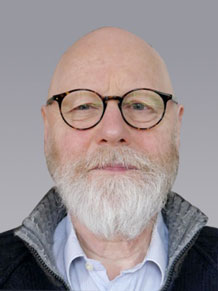 Prof. Philip Russell
Prof. Philip Russell
The year 2021 is the 30th anniversary of the initial proposal by Philip Russell for a novel type of optical fibre that would guide by the newly-proposed photonic bandgap effect: photonic crystal fibre (PCF). The first working PCF was reported by Russell's group (then at Southampton University in the UK) in 1996. In the same year his group moved to the University of Bath, where the majority of the initial breakthroughs were made, resulting in a series of papers that are amongst the most highly cited in the entire field of photonics. In 2005 Philip Russell moved to Erlangen in Germany, where he became one of two founding directors of the Max Planck Institute for the Science of light (MPL), placing Erlangen on the map as a world-leading centre of research not only into PCF itself, but also into its myriad applications. After attaining emeritus status at MPL in 2021, he has taken on the role of scientific director of the Russell Centre for Advanced Lightwave Science (RCALS) in Hangzhou, China. Russell is a Fellow of the Royal Society and Optica (formerly The Optical Society, OSA) and has won a number of awards for his research including the 2000 OSA Joseph Fraunhofer Award/Robert M. Burley Prize, the 2005 Thomas Young Prize of the Institute for Physics (UK), the 2005 Körber Prize for European Science, the 2013 EPS Prize for Research into the Science of Light, the 2014 Berthold Leibinger Zukunftspreis, the 2015 IEEE Photonics Award and the 2018 Rank Prize for Optoelectronics. He was OSA's President in 2015, the International Year of Light. In June 2016 he received an honorary doctorate from the Universidad Internacional Menéndez Pelayo in Santander, Spain. He was duly elected a Foreign Member of the Chinese Academy of Sciences in November, 2023. He is particularly proud that so many of his former group members are now active across the world, working in or leading academic or industrial groups in many countries.

 MAIL
MAIL


